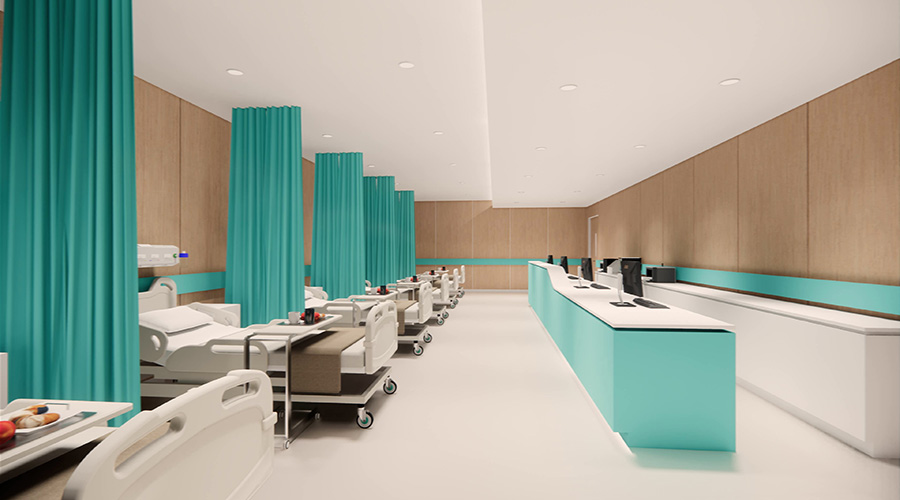Many healthcare organizations are rethinking how their mechanical systems are designed – especially in surgical settings. A growing number of ambulatory surgery centers (ASCs) are leading a shift toward dedicated HVAC units for each operating room, moving away from shared systems that can pose challenges for airflow management and redundancy.
Healthcare Facilities Today spoke with Aaron Shadlow, architectural designer, and Sarah Hoistad, design manager at Neenan Archistruction, about what’s driving this design trend and why smaller-scale facilities are particularly well suited to it.
HFT: What’s driving the shift toward dedicated HVAC units for each operating room (OR), and why are ambulatory surgery centers leading this change?
Aaron Shadlow: I think part of it has to do with a little bit of redundancy. So, if you have a number of operating rooms, let's say three for example. If you have one large unit for all three operating rooms, if that unit has an issue and it goes down, then all the operating rooms are now offline. That is now losing revenue because they have to cancel appointments.
The nice thing about having a separate unit for each operating room is because then you have that redundancy. So, if one unit goes down, only one operating room goes down. So that way they can maintain revenue for the rooms that are still functioning.
Related Content: Energy Savings Approaches To Enhance Wellness and Efficiency
Sarah Hoistad: The other thing that I would say is since ASCs are typically smaller, a lot of the times they're like one to six ORs, it’s easier to have separate units for that many ORs. Once you get into larger systems where you have 12 ORs, it doesn't really necessarily make sense to have separate systems for each OR.
A lot of the times surgery centers are one story buildings or two-story buildings. So, it's a lot easier to get the duct work to those spaces from separate units versus larger hospital systems where they have seven stories or whatever. It’s just a lot harder to get mechanical ducting to those spaces through all of the floors if they’re using rooftop units.
HFT: How does isolating airflow in each operating room enhance infection control compared to traditional shared HVAC systems?
Shadlow: The main thing is that every operating room is required to have ducted returns. When every operating room has its own system, you end up not having to worry about the cross-contamination of one operating room's airflow through and past another. That's probably the biggest thing as it relates to infection control.
HFT: Beyond infection control, what performance or operational benefits are healthcare organizations seeing from this approach, such as resiliency or environmental comfort?
Shadlow: As far as environmental comfort, since each room is on its own system, the humidity and temperature controls are specific to that room. There's ways to break that out with the larger units as well, but that's just a little bit more complicated, complex like a low voltage system, whereas the single units per room in these smaller ASCs is a little bit simpler of a system.
Jeff Wardon, Jr., is the assistant editor of the facilities market.

 EV Charging Stations: Planning for Safety, Convenience, Expansion
EV Charging Stations: Planning for Safety, Convenience, Expansion Ground Broken on UW Health University Row Medical Center
Ground Broken on UW Health University Row Medical Center Better, More Thorough Cleaning Saves Lives
Better, More Thorough Cleaning Saves Lives Encompass Health Opens the Rehabilitation Hospital of Amarillo
Encompass Health Opens the Rehabilitation Hospital of Amarillo